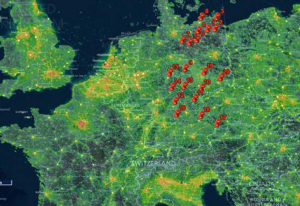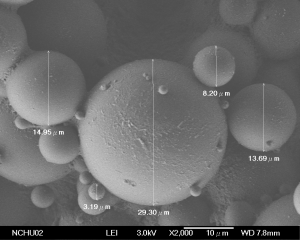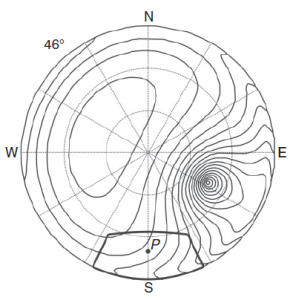Current scientific projects
Global Characterization of Skyglow
 No.: APVV-18-0014
No.: APVV-18-0014
Duration: 1.7.2019 – 30.6.2023
Teamleader: M. Kocifaj,
Team members: L. Kómar, J. Petržala, S. Wallner, H. A. Lamphar
.
.
.
Annotation:
In spite of the enormous progress in light pollution (LP) research since Garstang, subsequent theories are still limited to homogeneous skies, while the propagation of artificial light at night (ALAN) under broken cloud arrays remains largely unexamined. Due to its negative impacts, ALAN is currently one of the most pressing environmental concerns in the public eye. Thus major concerns were raised after experimental results showed that the predicted distributions and amplitudes of the ALAN differ from what we regularly observe in nature. Also, the mechanism of multiple scattering and optical distortion due to aerosols are both poorly described. This project will bring a fundamental understanding and satisfactory treatment of ALAN, while addressing the principal question: “How and to what extent the properties of both the artificially lit surface of Earth and the atmosphere can interact together, resulting in new means in the characterization and potential manipulation of ALAN”. We propose to 1) derive novel formulations and solutions to the light field in the nocturnal atmosphere with arbitrary cloud configurations; 2) uncover spectral “light-scattering and polarization fingerprints” that distinct types of clouds and aerosols can have in different parts of the sky; and 3) identify the manner in which both the atmosphere and light emissions from ground sources control ALAN. This could revolutionize the characterization of LP sources globally and have unexpected consequences in current developments in various fields. Overall, the project has great potential to open doors into a new research area with important applications in astronomy, lighting engineering, urban planning and also satellite remote sensing of aerosols at night, to which no competitive alternatives yet exist. The significance and novelty of the work will also lead to the acquisition of knowledge necessary to explain anomalous polarization features, or ALAN effects, due to compact and diffuse cities.
Diffuse light in urban environment: A new model, which embraces the optical properties of a local urban atmosphere

No.: VEGA
Duration: 1.1.2020 – 31.12.2023
Teamleader: M. Kocifaj
Team members: A. Kocifajová, L. Kómar, J. Petržala, S. Wallner
.
.
.
Annotation:
Due to elevated contamination by aerosols the diffuse light field in an urban environment differs from what we observe in city surroundings. The impacts on indoor daylight climate from different atmospheric turbidity conditions are also linked to emission sources in a city. Specifically, industry, public transportation, or construction work can produce particles that remain suspended in urban air for days or weeks and change the diffuse-light signatures. No quantification of the phenomena exists, no designed experiments have been performed and the theoretical development is in its infancy. Predictions from the present models are not accurate enough, so it is a great challenge of this project to develop a new optical model of urban atmosphere that 1) accounts for local scale parameters, 2) is applicable to arbitrary conditions, 3) can improve predictions of the diffuse-light patterns in a city, and 4) can be used by experts who deal with daylight and daylighting technologies.
The energy efficiency of an innovative BIPV/T-TE-PCM module with PCM passive cooling

No.: VEGA 2/0095/20
Duration: 1.1.2020 – 31.12.2023
Teamleader: L. Kómar
Team members: P. Matiašovský, P. Mihálka, J. Petržala, M. Kocifaj, M. Čekon, J. Čurpek
.
.
.
.
Annotation:
The objective of the presented proposal is to evaluate the efficiency of an innovative BIPV/T-TE-PCM (TE, thermoelectric; PCM, phase change material) for which little or no information is available. The emphasis is the operational performance assessment of proposed BIPV/T-TE-PCM module under practical conditions. The application of an integration model requires its coupling the building energy simulation with solar radiation availability models. The integration of PCM into a photovoltaic cell is important in terms of passive cooling of the panel, whose efficiency decreases with increasing temperature and also because of its prolonged service life, as thermal expansion can cause mechanical stress to the individual cell layers. In addition, the energy stored in the PCM will allow it to be used in the next phase, e.g. for water heating. The results will be structured in terms of the assessment analysis of this innovative BIPV/T-TE-PCM façade toward improving thermal comfort and energy efficiency of buildings.
Research of direct component of daylighting in architectural and interior environmen

No.: VEGA 2/0017/20
Duration: 1.1.2020 – 31.12.2022
Teamleader: S. Darula
Team members: S. Darula
.
.
.
.
.
Annotation:
Development in daylighting research is directed to better utilization of skylight and sunlight.Evaluation according to the most unfavourable condition is reasing and climatic approach of annual daylight utilization is introduced.Research of diffuse aylight availability has brought methodology of the standard interior daylighting evaluation.The availability of the direct component of the global illuminance which contributes to the dynamics of visual environment and influences physiological functions of human body is not yet explored. Sun radiation is the main source of life on the Earth.In the urban area the important role plays architectural formation of environment.The building and architecture are seen as a static element with given attributes.New approach requires solutions of adaptable and flexible forms based on the diversity. Project will search availability of direct illuminance, influence of sun radiation on the quality of the interior environment and adaptable and flexible architectural forms.

 contact
contact